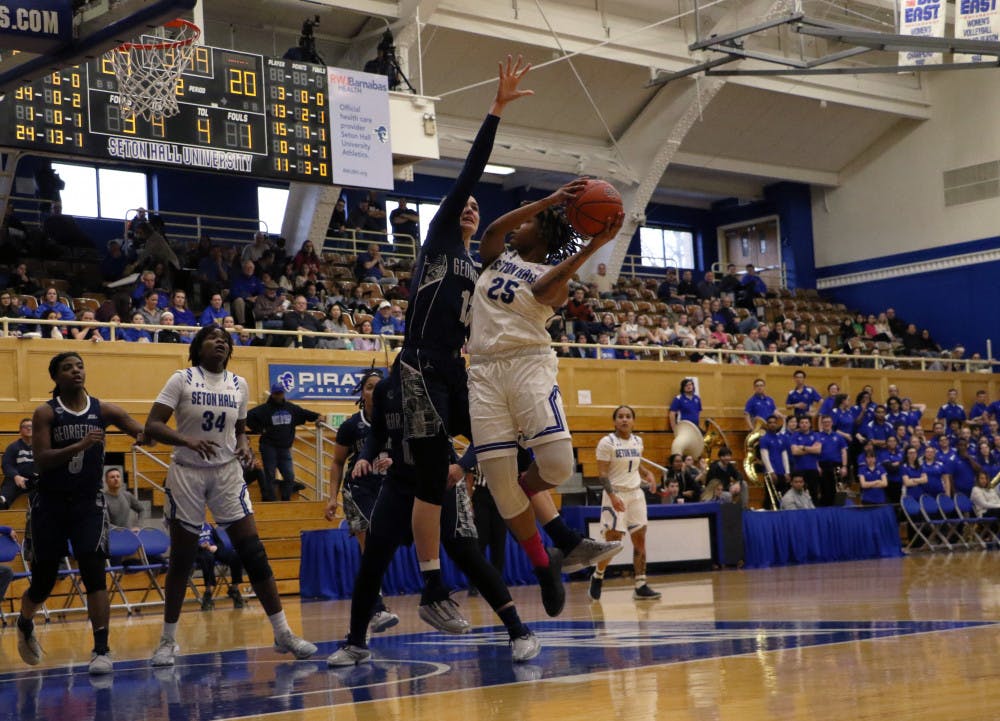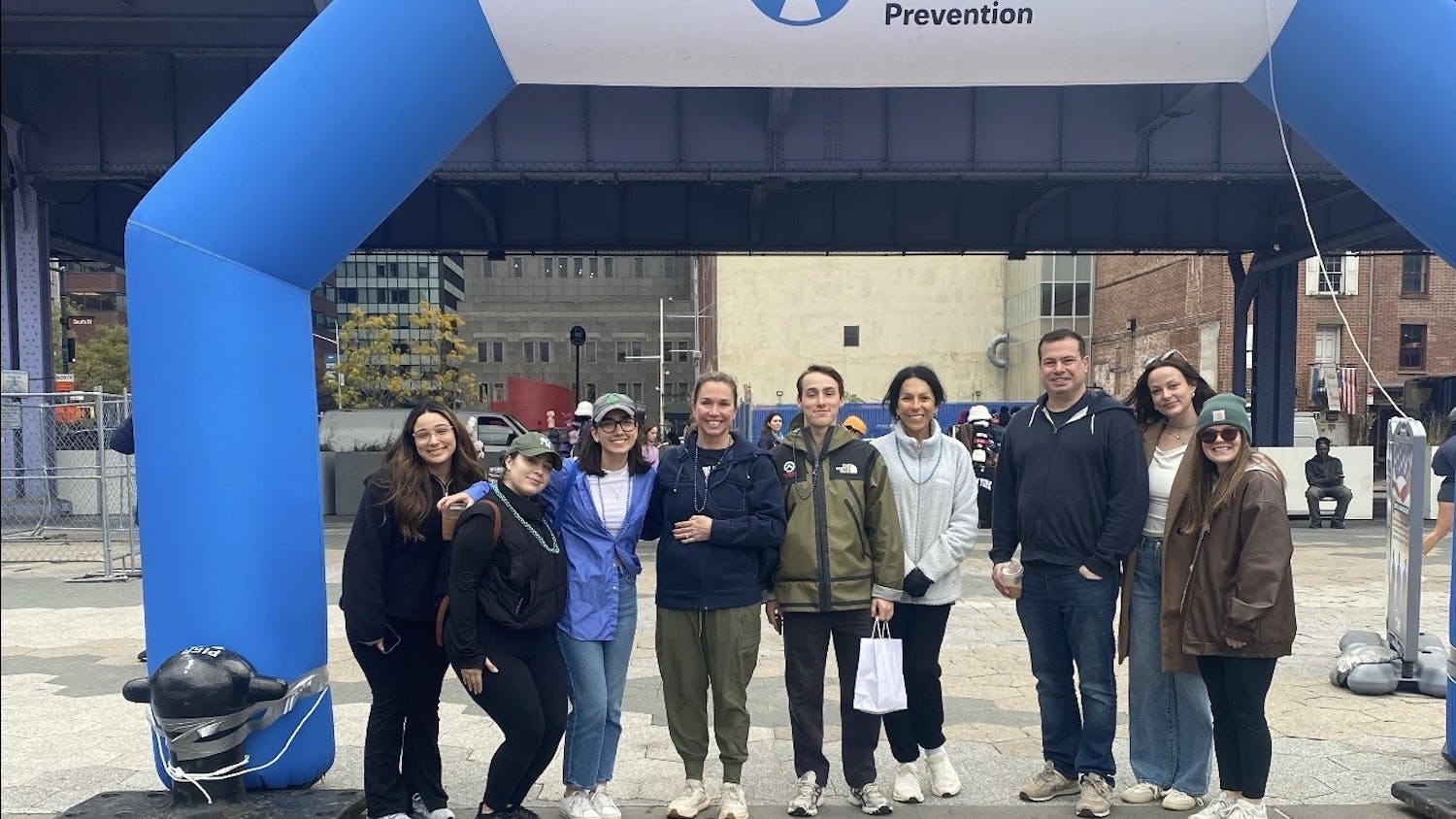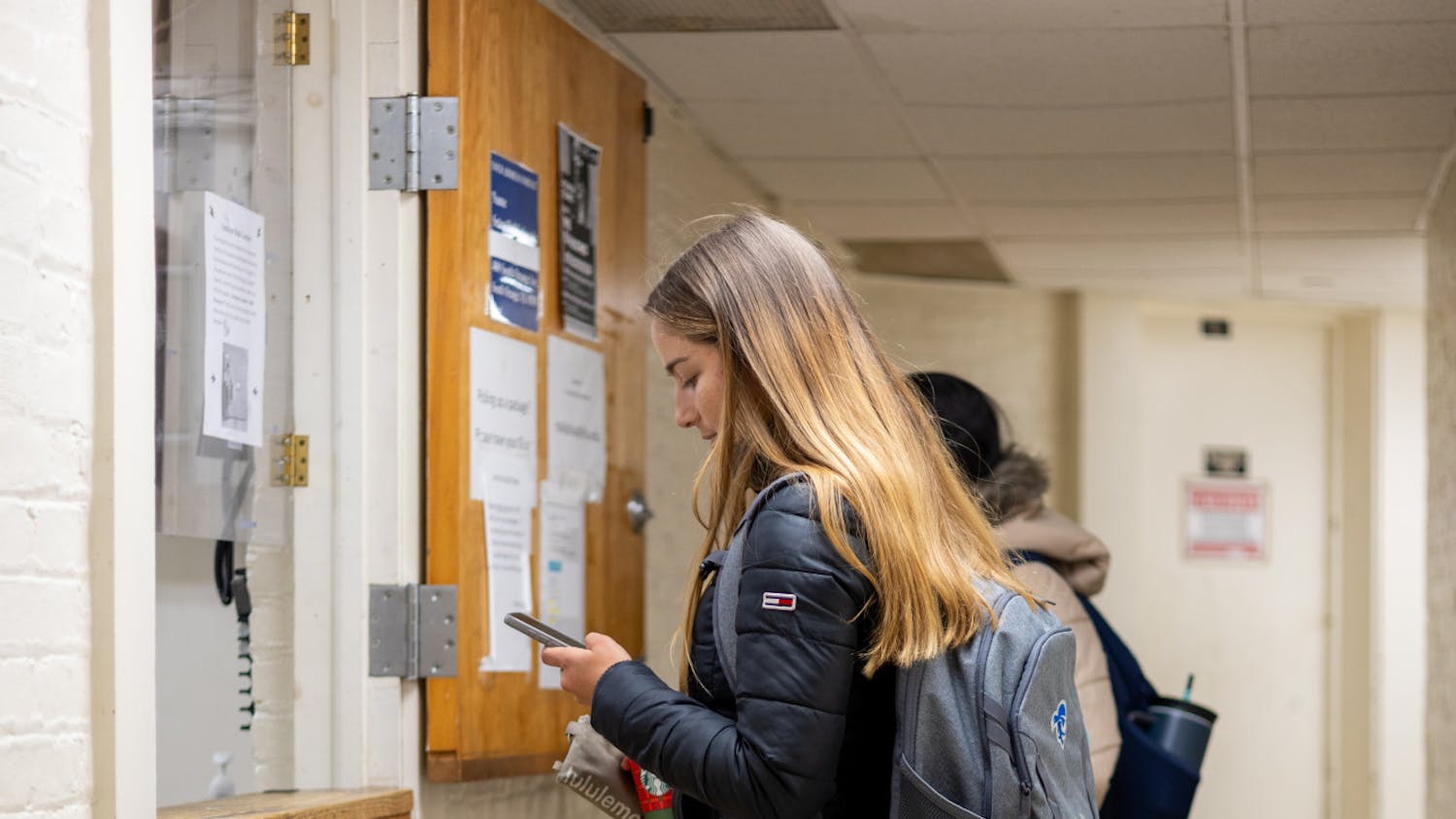In a disaster drill, a major water main broke on South Orange Avenue, causing a series of gas lines and pipes to burst at Seton Hall University where at least 15 students and faculty members suffered serious injuries.
The Leaders in Healthcare club sponsored a disaster simulation in the Schwartz Nursing Building for both undergraduate and graduate nursing students on Tuesday.
According to LIH Vice President and junior nursing major Carina Alecrim, about 30 students volunteered to either be victims or providers in the mock disaster.
"It's basically to get us as students and potential nurses to become aware of what goes into disaster preparedness such as triaging," Alecrim said.
According to Alecrim, triaging is the process of categorizing victims in terms of how critical their injuries are and how much medical help they will need.
Students volunteering as victims were made up to look like they had burns, bruises, cuts and other injuries by Kathe Conlon, Seton Hall guest faculty of the College of Nursing and burn disaster education coordinator at St. Barnabas Medical Center. Conlon graduated from Seton Hall's College of Nursing in 1987.
"Clearly, when I was in school there was never anything like this, but then in the early '80s disaster wasn't a concern the way it is today," Conlon said. "So I would say that the College of Nursing is being very proactive with responding to community."
During the simulation, victims were sprawled on the floor of a classroom in the Nursing Building with chairs and boxes scattered throughout the room. The simulation director of Winthrop University Hospital, Jared Kutzin, played a siren from his laptop to create a more urgent environment.
Kutzin was asked by Dr. Virginia Clerkin, adviser to LIH and director of the Clinical Nurse Leader Program at Seton Hall, and Conlon to help create the simulation.
Participants also thought that the simulation came at a good time due to the tragedy during the Boston Marathon.
"(Through the simulation) we're able to assess patients and understand how to react in a disaster situation, especially in light of what happened in Boston," junior nursing major Vanessa Wilkinson said. "People were running around and didn't know what to do. As a nursing student, you need to know what to do in a disaster situation because a lot of people tend to panic and you need to be that one to provide care."
"We thought it would be very good for the students to have a mock disaster simulation drill," Clerkin said. "In light of (the Boston Marathon), I think it's even more important."
Many student volunteers found the simulation to be both educational and enriching. Second-year clinical nurse leader graduate student Samantha Singh said that the drill offers a different experience to students.
"I think this is interesting and the most important aspect to the curriculum because it allows individuals to see real experience that they wouldn't ordinarily feel when they're reading from the book," Singh said. "This is an opportunity for them to practice their skills and master it and look at things from a different perspective."
At the end of the simulation, the students and faculty held a discussion and went over how they triaged the victims. Kutzin said that the triaging ultimately "was spot on."
Tiffany Do can be reached at tiffany.do@student.shu.edu.





